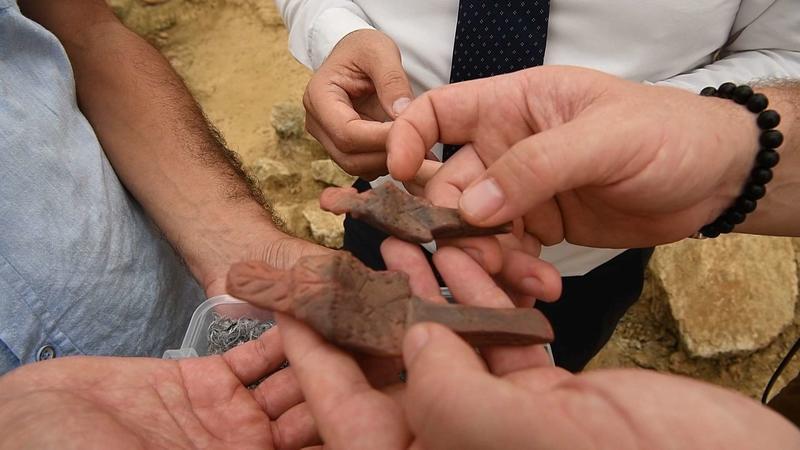
Excavations at a metro construction in Istanbul’s Beşiktaş neighborhood have been surprising excavation teams.
So far 69 burial cairns have been unearthed in the Bronze Age burial excavations, carried out by the Istanbul Archaeology Museums. The surprise of the excavations was two 5,550-year-old figurines, which are seven and 10 centimeters long.
After the discovery of burial cairns in the Beşiktaş Square, it was seen that in the Bronze Age, Turks had burial cairn culture and they settled in the area during the migration of tribes.
Along with half-and full-hocker position burials, cremation burials in the graveyard have been discovered.
The graves, which date back to the beginning of the Bronze Age (3500-3000 B.C.), revealed new findings about the history of Istanbul. Officials have been saying it’s too early to say the burials proved the traces of the first Turks in Istanbul, but the findings at the excavation site have been showing the contrary.
Works have been continuing to find out how the Central Asian steppe culture came to the Beşiktaş coasts, whether this culture was brought down through the Balkans or passed through Anatolia to the Balkans. Carbon-14 analysis and DNA tests on the skeletons in the graves will make these theses stronger.
With the special permission of the Culture and Tourism Ministry, the two figurines were found among burned bones in grave numbered 25. One of the figurines is big and the other is smaller. They were placed carefully inside the grave.
The front of the figurines is in a stylized human form, the head parts are oval, and there are symbols that can be described as leaves or branches. Looking at other anthropomorphic figurines found in Anatolia, stylized elements such as eyes and mouths are clearly seen.
In the figurines found in Besiktaş, the eyes and mouth are not clear, the feet are in one piece, and the fingers are also seen. The back part of the figurines has symbols made with scribing lines. This type of human description has similarities with the Tripoli-Cucuteni culture seen in the north of Moldavia, Ukraine and Romania. The Asian cairn culture researchers call these types of symbols “Tamga.”
The two figurines suggest that there may be an emotional bond between two people in terms of their positions in the grave and the similarities of symbols.
In this context, they show similar features, and one is bigger than the other, which suggests that the figurines can be a mother and her daughter.
The presence of figurines in a single grave among the other 69 graves that have been excavated so far increases the likelihood that the two individuals in this grave may belong to people who have a different position in the society in terms of religious or social status.
Istanbul Archaeology Museums Director Rahmi Asal said the two figurines were found for the first time in the excavations.
“Among the grave findings were potteries. These figurines were made of baked clay. We have never encountered these types of figurines before and could not find a similar finding in our researches. The similar forms are seen in Moldavia, Ukraine and Romania. The symbols on them are very interesting. We are working together with experts. There are similar symbols on the two figurines, too. We will be able to answer the questions when we solve them,” Asal said.